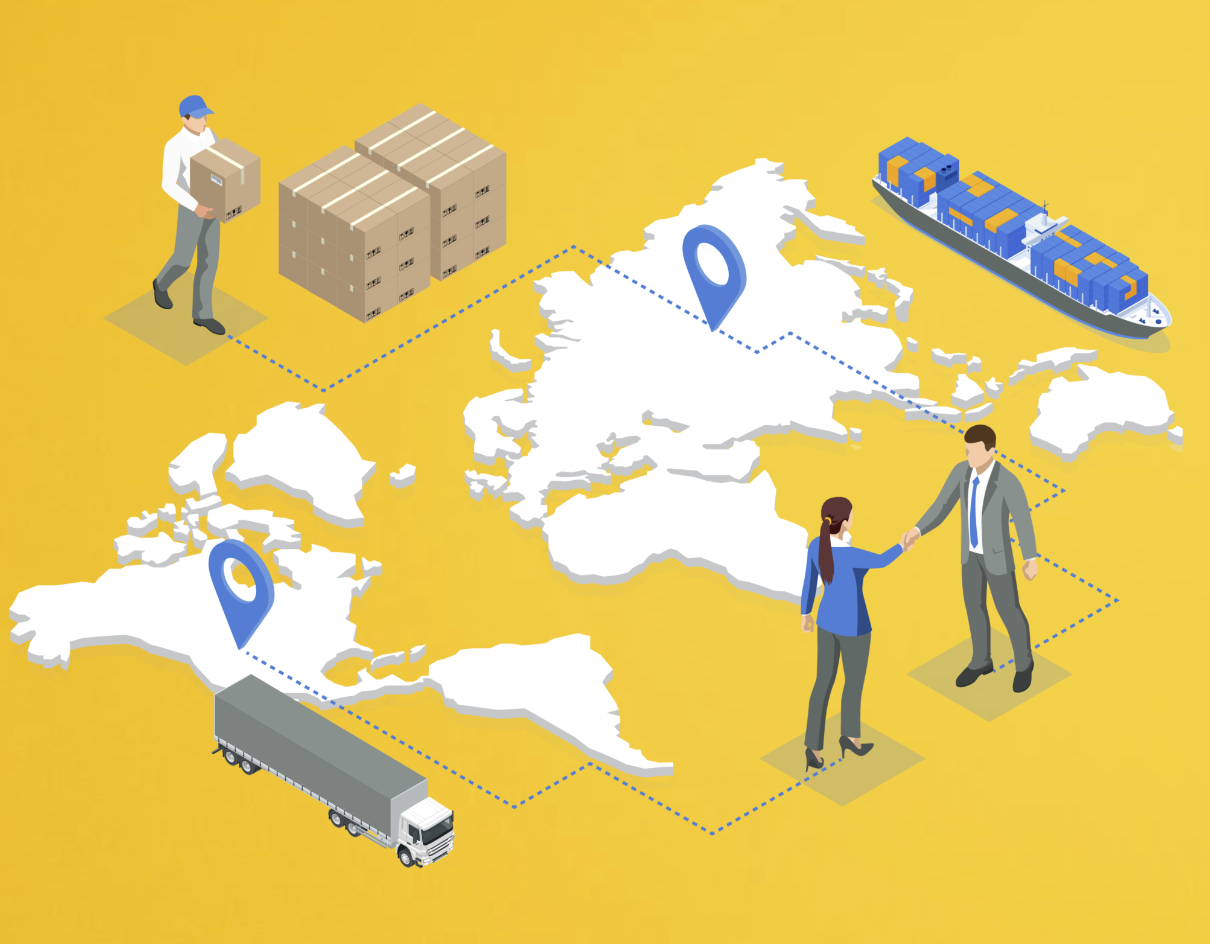One of the most common, costly and often avoidable category of delays we see are custom delays. Custom delays are some of the longest delays and having one often makes the package ineligible for a guaranteed service refund. Below are five simple steps you can take to avoid many of these delays and insure your international shipments get to where they need to be on time.
1. Know your Countries
The first step in shipping internationally is understanding the requirements, restrictions and practices that you need to adhere to in order to ship your package from A to B. Many countries have restrictions regarding which commodities may be shipped into and from their country as well as what services may be used to ship those commodities. Furthermore, you will need to understand which services your carrier offers between your origin and destination and what documents you will need to include.
FedEx offers a great in-depth guide to each of the over 100 countries they ship to which can serve as a guide to foreign regulations regardless of which carrier you use. Click here for FedEx’s country guide.
Another important aspect to keep in mind when shipping internationally are local holidays in the destination country. FedEx and UPS both provide international schedules which cover foreign national holidays but our experience from auditing millions of packages has shown that regional holidays and events, which impact service, are often not included in any of their posted schedules.
2. Provide a Detailed Description
Now that you know you can ship your package to your desired country, you need to describe what is inside the package. One of the most common reasons for customs delays is an inaccurate or vague shipment description. There are two primary aspects to providing a detailed shipment description, the written description and the Harmonized Tariff Code assigned to it.
A good written description answers the following questions:
- What is it?
- How many are there?
- What is it made from?
- What is the intended use?
Examples of Poor vs. Good descriptions for the same items
| Poor Description | Good Description |
| Parts | 100 8mm stainless steel washers |
| Samples | 10 pairs of denim jeans for display at trade shows |
| Gifts | Unsolicited Gift – Bicycle tires valued under $50 |
| Documents | 20 pages of bound legal documents |
Harmonized Tariff Codes
The second part of providing a detailed description of your shipment is to assign the right Harmonized Tariff Code to the item you are shipping.
Whether you’re importing, exporting or both, you need to properly classify your products under the Harmonized Tariff System (HTS) codes to meet the U.S. and foreign governments’ customs requirements. All of the import and export codes used by the U.S. are based on the HTS. The HTS assigns six-digit codes for general categories and additional digits can further differentiate products within a category. The U.S. defines products using 10-digit HTS codes. Attached to each HTS code are corresponding duties and regulations so it is extremely important to select the correct code.
UPS and FedEx both offer Harmonized Tariff search tools and you can search the U.S. International Trade Commission’s database here.
3. Declare the Right Value and Specify the Currency
Inaccurate Declared Value is one of the most prevalent reasons for duty and tax disputes which both delay your shipment and void your money back guarantee if the package arrives late. A shipment’s Declared Value represents the selling price or fair market value of the contents of the shipment and it is the value at which duties and taxes are assessed. The Declared Value should not be equal to the cost at which you created or purchased the item for. Even if the contents are not planned to be sold you must assign a fair market value to them or risk penalties and delays. While it may seem hard to assign a fair market value to many items you may ship, be sure to keep the value consistent across all custom documents, and be sure to specify the currency used, to limit the chance of a customs delay. In the case of gifts and samples, the shipment may be exempt from duties and taxes so be sure to know the destination country’s regulations (#1) and provide a detail description (#2).
4. Remember the Commercial Invoice
A Commercial Invoice is a commonly required document used by countries around the world to provide greater detail on the classification of shipments so that duties and taxes can be correctly assessed. If you are shipping documents, you likely won’t need one but if you are shipping anything else, you will likely need to include three copies of one.
If you are using any of the following services, for anything other than a document, you will need to include a Commercial Invoice
| UPS | FedEx |
| UPS Worldwide Express Plus | FedEx International Priority |
| UPS Worldwide Express | FedEx International Economy |
| UPS Worldwide Express Freight | FedEx International Next Flight |
| UPS Worldwide Saver | FedEx International First |
| UPS Worldwide Expedited | FedEx Express International (Canada) |
| UPS Standard | FedEx International Ground (Canada) |
| UPS Worldwide Express | FedEx Express International (Puerto Rico) |
| UPS 3 Day Select from Canada | |
| UPS Express Critical |
While Commercial Invoices can be generated online through shipment creation process with both FedEx and UPS we have found that many people are still omitting them or are filling them out by hand so we’ve included direct links to blank FedEx and UPS Commercial Invoices. Simply click and print.
Blank Official Commercial Invoice Templates
Click here for a blank UPS Commercial Invoice
Click here for a blank FedEx Commercial Invoice
5. Use 1 Box
The last point isn’t about paperwork or regulations, its about how FedEx and UPS routes multi-piece shipments. A multi-piece shipment is a shipment comprised of several pieces or boxes. Anytime you ship a multi-piece shipment internationally, you are exposing yourself to the risk of boxes arriving at customs at different times. Just because you shipped out all of the pieces of your shipment at once, doesn’t mean that they will all take the same route to the destination country. Half of your pieces in that single shipment may be routed through one distribution center while the other half may be sent off to a distribution center across the country. When the first group of pieces reach customs, they are allowed to be held until the last piece in the shipment also reaches customs. This creates a customs delay which may delay your shipment a day or more as well as likely voids your money back guarantee. To avoid this issue, you want to think about consolidating boxes. You will want to compare prices between shipping the pieces separately or boxing them all together especially if you regularly ship multi-piece shipments between the US and China where we often see this issue.
Conclusion
Following the five steps above isn’t going to guarantee your package gets to its destination on time. FedEx and UPS are still both late over 5% of the time when shipping internationally. Following the 5 steps above, familiarizes yourself with the countries involved, providing detail descriptions, complete paperwork, accurate values, and consolidating box count, will reduce the amount of avoidable delays in your shipments caused by custom delays. This should in turn save your business money, increase your customer satisfaction and help us in getting even more money back for your business through our Small Package Auditing Services by putting the burden of delivering your packages on time squarely in the hands of your carrier.





